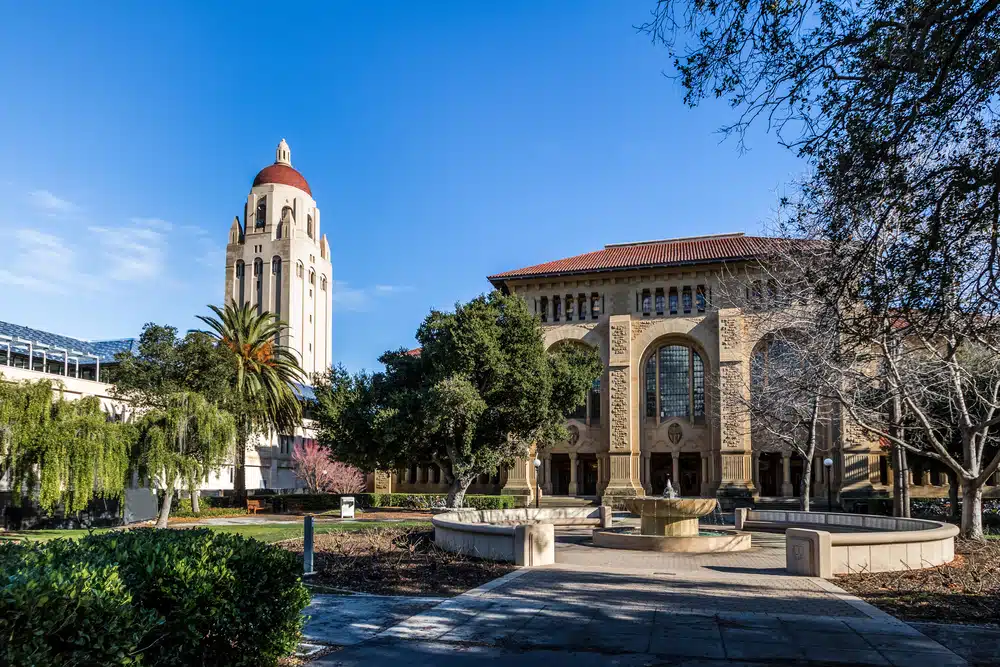Stanford Waitlist for 2025
Being waitlisted is an often misunderstood part of the college admissions process. It’s a unique situation that leaves many students with questions and unease, especially when it involves renowned institutions like Stanford University. In this article, we will take a closer look at the Stanford University waitlist process for 2025, providing clarity and advice for students who find themselves on the waitlist.
Understanding the Waitlist Process
When it comes to college admissions, the waitlist is a crucial tool that universities utilize to manage their enrollment process. It serves as a list of students who are not initially accepted but are also not outright rejected. These students find themselves in a state of admissions purgatory, eagerly waiting to see if a spot opens up for them before the school year begins.
Being placed on a college waitlist can be both exciting and nerve-wracking. It offers a glimmer of hope for students who were not accepted outright, as it indicates that the admissions committee sees potential in their application. However, it also means that their fate is uncertain, and they must patiently wait for further updates.
What is a College Waitlist?
A college waitlist is essentially a safety net for universities. It allows them to carefully manage their incoming class and ensure that they have a balanced and diverse student body. By placing qualified applicants on the waitlist, universities can fill any potential vacancies that may arise if accepted students decide not to enroll.
When a student is placed on a college waitlist, it means that the admissions committee found their application promising but couldn’t offer them a spot in the incoming class immediately. Instead, they are placed in a holding pattern, awaiting further evaluation and consideration.
It’s important to note that being waitlisted doesn’t guarantee admission. Universities carefully assess their waitlisted applicants and make decisions based on various factors, such as the number of spots available, the strength of the waitlisted pool, and the university’s enrollment goals.
How Does the Stanford Waitlist Work?
Stanford University, like many other prestigious institutions, employs a waitlist system to manage their admissions process effectively. Each year, Stanford accepts a certain number of applicants, but they also reserve a relatively small portion of candidates for their waitlist.
The purpose of Stanford’s waitlist is twofold. Firstly, it ensures that the university has a pool of highly qualified applicants to choose from if any accepted students decide not to enroll. This allows Stanford to maintain its rigorous academic standards and ensure a diverse and talented incoming class.
When a spot becomes available in the freshman class, Stanford’s admissions committee reviews the applications of those on the waitlist. They carefully consider each applicant’s qualifications, achievements, and potential contributions to the university community. From this pool of waitlisted students, they select one individual who will be extended an invitation to join the freshman class.
Being waitlisted by Stanford is a testament to a student’s exceptional qualities and achievements. It signifies that they are among a select group of individuals who have caught the attention of the admissions committee. While the wait can be challenging, it’s essential for waitlisted students to remain hopeful and continue pursuing their academic and personal goals.
In conclusion, the waitlist process in college admissions plays a crucial role in shaping the incoming class of universities. It offers a second chance for qualified applicants who may not have been accepted initially. While the wait can be filled with uncertainty, it’s important for students to stay positive and explore other options while they await further updates from the university.
Factors Influencing the Stanford Waitlist
Admission Statistics for Stanford University
Understanding Stanford’s admission statistics can shed some light on the size and competitiveness of their waitlist. For instance, for the 2024 school year, Stanford’s acceptance rate was approximately 5%. This means that out of the thousands of applications received, only a small fraction were accepted. Among those not accepted outright, a small percentage were placed on the waitlist.
Being placed on the waitlist at Stanford is not uncommon, given the high caliber of students who apply each year. The university receives applications from all over the world, with students who excel in academics, extracurricular activities, and leadership roles. With such a competitive applicant pool, it is no wonder that the waitlist at Stanford is highly sought after.
Impact of Early Decision and Regular Decision Applicants
The type of application—early decision or regular decision—can also influence your waitlist experience. Stanford does not offer early decision, but students who apply early action and are deferred could end up on the waitlist. The university treats these students in much the same way as regular decision applicants who end up on the waitlist.
When considering applicants for the waitlist, Stanford takes into account various factors, including academic achievements, extracurricular involvement, personal essays, recommendation letters, and demonstrated interest in the university. The admissions committee carefully reviews each application to determine if the student would be a good fit for the Stanford community.
It is important to note that being placed on the waitlist does not mean that the applicant is not qualified or deserving of admission. The university has limited spots available and must carefully consider each applicant to create a diverse and talented incoming class.
For those who find themselves on the Stanford waitlist, it is crucial to stay engaged and demonstrate continued interest in the university. This can be done through submitting additional materials, such as updated grades or achievements, writing a letter of continued interest, or attending virtual events hosted by the university.
Ultimately, the Stanford waitlist is a reflection of the university’s commitment to selecting the best possible candidates for their incoming class. While the waitlist can be a challenging and uncertain experience, it is important to remain hopeful and continue pursuing other opportunities. Many students who have been admitted off the waitlist have gone on to have successful and fulfilling experiences at Stanford.
The Emotional Aspect of Being Waitlisted
Dealing with Uncertainty and Disappointment
Being placed on a college waitlist can be emotionally challenging, especially when it’s a school you have set your heart on. The uncertainty can be stressful, and it’s natural to feel disappointed. It helps to remember that being on the Stanford waitlist means the admissions committee sees potential in you; it’s not a rejection. Process these feelings, vent to someone you trust, and make space for self-care during this waiting period.
As you navigate the emotional rollercoaster of being waitlisted, it is important to acknowledge and validate your feelings. Allow yourself to experience the disappointment, frustration, and even anger that may arise. These emotions are a natural response to the uncertainty of your college future. It is essential to find healthy ways to express and process these emotions, whether it be through talking to a trusted friend or family member, writing in a journal, or engaging in activities that bring you joy and relaxation.
While it may be tempting to constantly refresh your email inbox or obsessively check college forums for any updates or insights, it is crucial to strike a balance between staying informed and maintaining your mental well-being. Remember that the waitlist is not a definitive answer, and there is still a chance of being admitted. However, it is equally important to remain realistic about the situation. Understand that the waitlist is unpredictable, and there are no guarantees.
Maintaining Hope and Perspective
While it’s important to stay hopeful, you should also remain realistic about the situation. The waitlist is unpredictable, and it does not guarantee an offer of admission. Keep pursuing other viable higher education options and try not to dwell too much on the waitlist status. No matter the outcome with Stanford, remember that there are multiple pathways to success.
During this waiting period, it can be helpful to shift your focus from the uncertainty of the waitlist to the opportunities that lie ahead. Explore other colleges and universities that align with your interests and goals. Research their programs, campus culture, and extracurricular activities. By broadening your horizons and considering alternative options, you can open yourself up to new possibilities and potential paths to success.
Additionally, take this time to reflect on your personal growth and accomplishments thus far. Remember that your worth as an individual is not solely determined by college admissions decisions. Celebrate your achievements, both big and small, and recognize the unique qualities and strengths that make you who you are. Embrace the journey of self-discovery and trust that the right path will unfold, regardless of the outcome with Stanford.
Lastly, surround yourself with a support system that uplifts and encourages you. Seek guidance from mentors, teachers, or counselors who can provide valuable advice and perspective. Engage in conversations with individuals who have experienced similar situations and can offer insights and encouragement. Remember that you are not alone in this process, and there are people who genuinely care about your well-being and success.
Strategies for Students on the Waitlist
Communicating Continued Interest to Stanford
If you find yourself on the Stanford waitlist and still want to attend, it’s important to communicate this to the university effectively. You might write a letter or email expressing why Stanford is your first choice and detailing any significant achievements or developments since your initial application. Highlighting your ongoing commitment and enthusiasm can be helpful, but remember to keep your message professional and concise.
When crafting your letter or email, it’s essential to personalize it and make it stand out. Consider mentioning specific programs, professors, or research opportunities that align with your academic and career goals. By demonstrating your knowledge of Stanford’s offerings, you show the admissions committee that you have done your research and are genuinely interested in the institution.
Furthermore, it can be beneficial to include any recent accomplishments or experiences that have further solidified your desire to attend Stanford. Whether it’s winning a prestigious award, participating in a meaningful community service project, or conducting groundbreaking research, sharing these updates can help strengthen your case for admission.
Remember, while it’s crucial to express your continued interest, it’s equally important to maintain professionalism and avoid sounding desperate or entitled. Keep your tone respectful and sincere, emphasizing your genuine passion for Stanford and your belief that it is the perfect fit for your academic and personal growth.
Exploring Other College Options
While waiting to hear from Stanford, it’s vital to keep your college search active. Consider your other acceptance offers, visit campuses if you can, and research your options thoroughly. If you have a second or third choice, it’s a good idea to accept an offer as a contingency plan. Remember, many opportunities for a top-notch education exist beyond Stanford.
Exploring other college options does not mean compromising on your dreams or settling for less. Instead, it allows you to broaden your horizons and discover other institutions that may offer unique opportunities and experiences. Take the time to delve deep into the academic programs, extracurricular activities, and campus culture of each college you are considering.
Visiting campuses can provide invaluable insights into the daily life of a student and help you envision yourself as a member of the community. Attend information sessions, sit in on classes, and engage with current students to gain a comprehensive understanding of what each college has to offer.
While it’s natural to have a first-choice school, remember that the college experience is what you make of it. Regardless of where you end up, there will be ample opportunities for growth, learning, and personal development. Keep an open mind and embrace the possibilities that await you at each institution on your list.
Additionally, don’t hesitate to reach out to college admissions counselors or current students for guidance and advice. They can provide valuable insights into the college selection process and help you make an informed decision.
Ultimately, being on the waitlist can be a challenging and uncertain period. However, by effectively communicating your continued interest to Stanford and exploring other college options, you can navigate this process with confidence and optimism. Remember, the college admissions process is just the beginning of your educational journey, and wherever you end up, you have the potential to thrive and succeed.
The Outcome: Getting Off the Stanford Waitlist
Timeline for Waitlist Decisions
Stanford typically starts notifying waitlisted students of their status after May 1st, the national deadline for students to accept or decline their college offers. The process may continue into the summer as the university fine-tunes its incoming class size. It’s essential to be prepared for a potentially long wait and to make other plans in case you don’t receive a positive outcome from the waitlist.
Preparing for Possible Outcomes
There are four potential outcomes when you’re on a college waitlist – you could receive an acceptance offer, a rejection, you might choose to remove yourself from the waitlist, or you could remain on the waitlist and defer your admission for a year. Take time to think through each of these scenarios and plan accordingly. It’s a good idea to have your backups ready and be prepared to make a quick decision once you hear from Stanford.
Being on Stanford’s waitlist can evoke a spectrum of emotions and questions. However, remember that your self-worth is not defined by college admissions. Use this waitlist experience as a learning opportunity, and always remember to take care of your emotional well-being. No matter what, the future holds exciting opportunities, be it at Stanford or elsewhere.
How AdmissionSight Can Help You with College Admissions
AdmissionSight is a college consulting firm that provides personalized assistance to students throughout the college admissions process. Here are some ways that AdmissionSight can help you:
Admissions strategy: AdmissionSight can help you develop a strategic plan for your college application process. Our professional consultants can assist with identifying schools that are a good fit for your academic, extracurricular, and personal goals and help you plan and prioritize your application strategy.
Application review: AdmissionSight can review your application and provide feedback on how to improve it. We can offer suggestions on making your application stand out and highlighting your strengths and unique qualities.
Essay coaching: AdmissionSight can help you craft compelling essays that showcase your personality, goals, and achievements. We can guide you through the essay writing process and provide feedback on your drafts to help you refine your writing.
Interview preparation: AdmissionSight can provide interview coaching to help you feel confident and prepared for college interviews. Our experts can offer tips on how to present yourself professionally and how to answer common interview questions.
Extracurricular planning: AdmissionSight can help you plan and develop your extracurricular activities to make them more impactful and meaningful. We can suggest activities that align with your interests and goals and provide guidance on demonstrating your leadership and initiative.
Overall, AdmissionSight can provide valuable guidance and support throughout the college admissions process to help you maximize your chances of getting accepted into the college of your choice.
With a high success rate of over 75%, we have built a strong network in the past decade. Book an initial consultation today, free of charge!









































